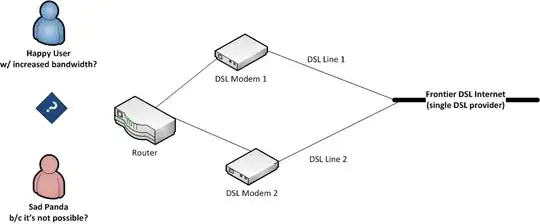Possible Duplicate:
Is there a sensible way of ‘teaming’ two ADSL connections?
WARNING: I am NOT a networking professional (obviously, see below) but I am a programmer and have a decent understanding of how the bits get moved.
Is it possible to increase my actual/perceived bandwidth by combining two incoming DSL connections (from the same provider) and either balancing them on a dual connection modem(?) or a router that will accomplish the same?
Bonus: What hardware (consumer hopefully) is required?
